Devorah Fox's Blog, page 15
August 26, 2016
Journal of a novel: Aug. 26, 2016. Page count
In a series of posts, I’ll share both Steinbeck’s Journal of a Novel and what I learn from it, and I’ll show you what the writing life is like for me.
John Steinbeck wrote every weekday, and sometimes on the weekends. He wrote one page, maybe two. It doesn’t sound like much. Maybe he mulled over each word extensively before he committed it to paper. I’ll admit when I read about his “page a day,” I was somewhat amused. I would have expect more production from a writer of his ilk.
One way or the other, I also write every weekday, and sometimes on the weekend. I’m not always advancing a novel or a short story; sometimes it’s a blog post, an essay, or a promotional piece.
I ran out of time yesterday to get a Journal of a Novel post onto this blog. It was an exceptionally busy day. I’m auditing a fiction-writing class and yesterday was the first meeting. In addition, I had my normal amount of work to accomplish. Nevertheless, I got some creative writing done. Our “homework” is to make like Steinbeck and write every day. One page. We’re to work on short stories and turn in five pages every Friday. (Ramping up at top speed, we were assigned three pages for this week even though it’s a short “class week.”) This is called the “Page Count” part of the coursework.
Instead of sitting around waiting for inspiration to strike, we’re to get into the habit of writing every day. It creates a discipline, and keeps the brain engaged in the work-in-progress. In addition to the requirement that we write a page a day, we were charged with writing NO MORE than a page a day, even if our brain is buzzing with ideas. Ending the work day with something still to be written means we’ll be up and running the next day. So now I understand Steinbeck’s work habits better. He may have employed this very same practice.
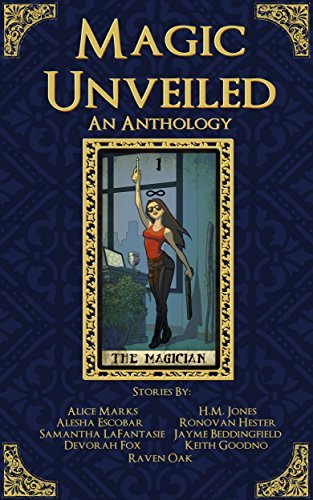 So even though I am engaged in getting two novels out in the next five months, plus finish a short story and a poem slated for submission, I started a new short story to meet the course requirement. By the end of the semester we’re to have crafted three short stories. At least one should be heroic fantasy and one should be urban fantasy. Those familiar with The Bewildering Adventures of King Bewilliam know that I have a LOT of novel-length heroic fantasy under my belt, so I thought for my first outing I’d give urban fantasy a whirl. I’ve been writing magical realism lately; you can read my short story Blackwing in the Magic Unveiled anthology when it launches in October. My class project is also magical realism in a contemporary setting. At the rate of five pages a week, I’ll have the first draft done in three weeks.
So even though I am engaged in getting two novels out in the next five months, plus finish a short story and a poem slated for submission, I started a new short story to meet the course requirement. By the end of the semester we’re to have crafted three short stories. At least one should be heroic fantasy and one should be urban fantasy. Those familiar with The Bewildering Adventures of King Bewilliam know that I have a LOT of novel-length heroic fantasy under my belt, so I thought for my first outing I’d give urban fantasy a whirl. I’ve been writing magical realism lately; you can read my short story Blackwing in the Magic Unveiled anthology when it launches in October. My class project is also magical realism in a contemporary setting. At the rate of five pages a week, I’ll have the first draft done in three weeks.
August 24, 2016
Journal of a novel: Aug. 24, 2016. Show, don’t tell
In a series of posts, I’ll share both Steinbeck’s Journal of a Novel and what I learn from it, and I’ll show you what the writing life is like for me.
I have to laugh. In John Steinbeck’s first Journal of a Novel entry, he describes the notebook in which he’s about to write and reports that:
a puppy gnawed the corners of the front cover
I left my copy of Journal of a Novel in a vulnerable spot. My cat, who’s fond of chewing things like computer cables and iPad cases, left some vampirish fang marks on the cover. It looks like someone attacked my book with a giant stapler.
In his March 29 entry, Steinbeck writes:
It is the custom nowadays in writing to tell nothing about a character but to let him emerge gradually through the story and the dialogue.
Wow, is that ever true today. The catch phrase is “show, don’t tell,” and woe betide the writer who uses too much exposition. When I first received this instruction in an early creative writing class, I didn’t quite get it. I can’t remember when the light bulb went on over my head but I understand it now, so well that I tsk-tsk when I read someone else’s work that has too much telling and not enough showing.
However, I recently got a much better sense of what Steinbeck was griping about when I picked up Lady Chatterly’s Lover, first published in 1928, several decades before Steinbeck. Between Steinbeck and D. H. Lawrence, you might be thinking I’m on a program of reacquainting myself with classic literature but that’s not why I was reading Lady Chatterly’s Lover. I was doing research in connection with a poem I was writing.
I was stunned by how much telling and how little showing there was. Steinbeck nailed it: the writing style is completely different. Had Lawrence shown and not told, Lady Chatterly’s Lover would probably be three times longer than it is.
It would be an interesting writing exercise to rewrite Lady Chatterly’s Lover using today’s “show, don’t tell” writing style. Then Steinbeck could stop grumbling. I’ll add that to my Story Ideas list.
August 23, 2016
Journal of a Novel: Aug. 23, 2016. A different breed
In a series of posts, I’ll share both Steinbeck’s Journal of a Novel and what I learn from it, and I’ll show you what the writing life is like for me.
In his Monday, March 26, Journal of a Novel entry, John Steinbeck muses about being different from other people:
I dislike thinking of myself as different or set aside or separate from other people and yet I am forced to sometimes, much as I dislike it. It is borne in upon me that I do not like the pastimes which amuse and satisfy others—the games, both mental and physical, cards, gambling, tennis, croquet. It is not that I dislike them but that they bore me and in no way hold my attention.
I can relate. Football season is about to start. The sport is especially popular around here and most of the people that I know can’t wait for the games to begin. I couldn’t care less. Instead, I’m laying plans for the event that looms large in my fall calendar: National Novel Writing Month.
In my lifetime, I have attended two football games. One was a scrimmage between two pro teams. The other was a college game that I went to on a date. I knew nothing about the game and had no idea what was going on. Being a dutiful girlfriend, I tried to show that I was engaged in what the guy was interested in by asking questions. I was requested to please be quiet so that he could watch the play. OK … At the conclusion, I suggested that henceforth he take a buddy and leave me out of it.
Now as my friends talk about defense and wide receivers and downs and interceptions, my eyes glaze over. The same way that their eyes glaze over when I talk about book trailers and online cyber book festivals and epub conversion and Facebook author page takeovers. Yes, I definitely live in a different world.
August 22, 2016
Journal of a novel: Aug. 22, 2106. The magic pencil
In a series of posts, I’ll share both Steinbeck’s Journal of a Novel and what I learn from it, and I’ll show you what the writing life is like for me.
I’m back on the “Steinbeck Trail.” The subject of his Journal of a Novel entry that I’ll be commenting on just happens to provide the perfect introduction to some news that I wanted to share with you. It’s the kind of coincidence that just gives one chills, as though all the stars are aligned in one’s favor and the Universe is nodding with approval.
John Steinbeck wrote not only his journal but his novel in longhand, and he used pencils. He was extremely fond of pencils. In his journal, he often remarks about how many he used in the course of a project and what an expense that was. On March 22, he writes
I have found a new kind of pencil—the best I have ever had. Of course it costs three times as much too but it is black and soft but doesn’t break off. I think I will always use these. They are called Blackwings …
Thank you, Mr. Steinbeck, for such a lovely segue.
Readers of this blog will recall that some months ago I posted about Blackwing pencils. They came up in a story I read about the connection between writing in longhand and brain activity. The story mentioned Blackwing pencils as being premier writing instruments. The Blackwing pencil was introduced in the 1930s by Eberhard Faber and was the pencil of choice for Oscar, Grammy, and Pulitzer Prize winners throughout the 20th century. After it was discontinued in the 1990s, fans began paying as much as $40 per pencil to acquire unused stock.
Curiosity about exactly who used Blackwing pencils led me to John Steinbeck, which led me to his Journal of a Novel. But wait, there’s more.
These near-mythical writing instruments seized my imagination. Was it an accident that award-winning creative people used Blackwing pencils, or were the pencils themselves inbued with magical properties? I explored this notion in a short story, entitled Blackwing.
 Today I am delighted to tell you that you’ll soon be able to read my story, Blackwing, in a forthcoming anthology of magical realism stories called Magic Unveiled. The collection will launch October 13, 2016, but you can preorder it now. That my news about the anthology’s debut dovetails with my planned post about John Steinbeck’s Blackwing-pencil discovery seems in itself quite magical, doesn’t it?
Today I am delighted to tell you that you’ll soon be able to read my story, Blackwing, in a forthcoming anthology of magical realism stories called Magic Unveiled. The collection will launch October 13, 2016, but you can preorder it now. That my news about the anthology’s debut dovetails with my planned post about John Steinbeck’s Blackwing-pencil discovery seems in itself quite magical, doesn’t it?
August 18, 2016
Good Things, an Urban Fantasy Anthology
We’re taking a break today from John Steinbeck’s Journal of a Novel to celebrate the release of a new book, Good Things.

Good things come from unexpected places…
Magic and mayhem. Vampires and gods. Cops and werewolves. The binding thread of mysticism in the modern world and acts of kindness, small and large, random and focused. Join these ten authors as we travel through their worlds.
All of the author proceeds from the sales of this anthology will go to the Random Acts Organization, sponsoring kindness throughout the world. This is not official Random Acts merchandise, but is a fundraising project under permission from the charity.
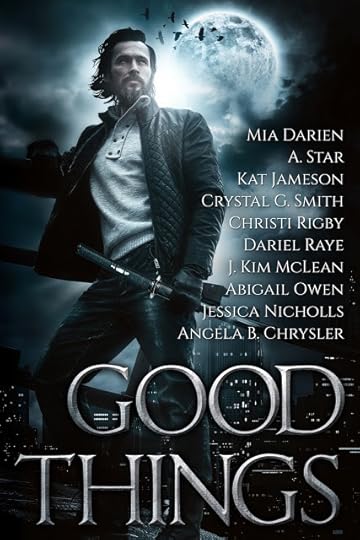
Genre: Urban Fantasy
Publication Date: August 18, 2016
Charity: Random Acts of Kindness

Available in digital and print on Amazon!
Join the GOOD THINGS release day party on

happening August 18-20!

A. STAR (DIANTHA JONES)

Diantha Jones loves writing fantasy books filled with adventure, romance, and magic. She’s the author of the Oracle of Delphi series, the Mythos series, and the Djinn Order series (as A. Star). When she isn’t writing or working, she is reading or being hypnotized by Netflix. She is a serious night-owl and while everyone else is grinning in the warmth and sunlight, she’s hoping for gloominess and rain. Yeah, she’s weird like that.
Website | Twitter | Facebook | Goodreads | Pinterest
ANGELA B. CHRYSLER
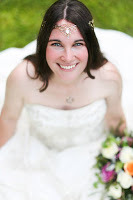
Angela B. Chrysler is a writer, logician, philosopher, and die-hard nerd who studies theology, historical linguistics, music composition, and medieval European history in New York with a dry sense of humor and an unusual sense of sarcasm. She lives in a garden with her family and cats.
In 2014, Ms. Chrysler founded Brain to Books: the marketing promotional engine and online Encyclopedia for authors. A passionate gardener and incurable cat lover, Ms. Chrysler spends her days drinking coffee and writing beside a volume of Edgar Allan Poe who strongly influences her style to this day. When Ms. Chrysler is not writing, she enables her addictions to all things nerdy, and reads everything she can get her hands on no matter the genre. Occasionally, she finds time to mother her three children and debate with her life-long friend who she eventually married. Her writing is often compared to Tad Williams. Her influences are Edgar Allan Poe, The Phantom of the Opera, and Frankenstein.
Website | Amazon | Goodreads | Twitter
J. KIM MCLEAN
Kim’ love of reading came after her mother introduced her to Tolkien and the Hobbit, followed by Lord of the Rings. She also lovingly blames her mother for her love of Science Fiction and Fantasy, thanks to being raised on Star Trek. Kim has always had a vivid imagination, but it wasn’t until she finished with graduate school (where she earned a Master’s of Science in Geology) that she found she could focus her imagination into creating her own characters and stories. Much of her writing has been for various play by email or forum role play universes, though Kim does hope this will be the first of many more stories she writes for publication.
When not writing, Kim can be found snowboarding, hiking, or doting on her furry beasts.
DARIEL RAYE
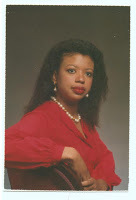
Dariel Raye is an award-winning author of powerful IR/MC (Interracial/Multi-cultural) paranormal romance and dark urban fantasy with alpha male heroes to die for and strong heroines with hearts worth winning. Her stories tell of shifters, vamps, angels, demons, and fey (the Vodouin variety). Dariel is currently writing three series: “Dark Sentinels” (wolf shifters), “Orlosian Warriors” (Vampire-like Nephilim), and “Gateway” (a crossover erotic paranormal suspense with romantic elements).
For more about Dariel, follow her blog or visit her website. She also publishes a new release newsletter. If you enjoyed this book, please post a review on review sites. You can also follow her and contact her on Twitter, Facebook, or Pinterest.
Website | Blog | Newsletter | Twitter | Facebook | Amazon | Goodreads | Google+ | Tumblr
MIA DARIEN

Born a Connecticut Yankee in nobody’s court, Mia Darien grew up to brave snow and talk fast. She started reading when she was three and never looked back, soon frequently falling asleep with a book under her cheek. (Something she still does, though these days it?s her Nook as often as a paperback.)
At eleven, she discovered Night Mare by Piers Anthony and entered the world of grown-up fantasy fiction and it was all over from there. She started writing at fourteen, then met vampires as a teenager and the concept for what would become Adelheid was soon born. Epic fantasy remains her first love, but she enjoys writing whatever stories come to mind in any genre.
Now she loves both writing and helping her indie community with her freelancing. A geek till the end, she enjoys role-play by email games and World of Warcraft when she has the time. Married to her very own Named Man of the North, she lives with him, their mini-tank (also known as their son) and pets, who usually act more childish than the child.
Website | Twitter | Facebook | Goodreads
ABIGAIL OWEN

Award-winning paranormal and contemporary romance author, Abigail Owen was born in Greeley, Colorado, and resides in Austin, Texas, with her husband and two adorable children who are the center of her universe.
Abigail grew up consuming books and exploring the world through her writing. A fourth generation graduate of Texas A&M University, she attempted to find a practical career related to her favorite pastime by earning a degree in English Rhetoric (Technical Writing). However, she swiftly discovered that writing without imagination is not nearly as fun as writing with it.
Website | Facebook | Twitter | Pinterest
CRYSTAL G. SMITH
Born a small town Missourian, Crystal grew up in a time where reading was used for her escape from the everyday worries of a young girl. She then began developing ideas of how she would write a book and what she would do with her characters. Soon, idea came to typewriter and then thankfully computers.
Her love of reading is not centered on one specific genre, but with her writing, she has a tendency to stay with the romance genre. Whether it be modern day romance or paranormal romance, and a lot of steamy, she enjoys writing a story where characters find love in one another no matter how twisted their lives.
She has written several stories for charity to date and continues to write novellas and novels. She is an indie author with a large imagination and even larger heart. She is married with four children, (even though two of them have four legs). She works full-time as a pediatric nurse and when she isn’t acting goofy with family, you can find her reading or writing.
Website | Twitter
KAT JAMESON
Kat Jameson has been having just plain wicked thoughts for about as long as she’s been writing, so it seemed like a very natural progression that the two would end up together. She is a woman who seems perfectly average on the outside, but believes in a great capacity for the power of love and the joy of sex and thinks constraints should be put on neither so long as everyone involved is happy. So that’s what she writes about.
Website | Facebook | Twitter | Goodreads
CHRISTI RIGBY
Christi Rigby lives in Colorado with her husband and her two teen boys, rounding out the group is a bernese mountain dog and an old orange cat that can’t seem to sleep in the morning past the need for some kibble at 5 am, then returns to the bed after it has been vacated but the owners. She has written a number of short stories for publication and is working on her first book to be published. When she is not writing at a keyboard she is always writing in her mind, so to say writing is her real life over the job she holds would be a fair representation. An avid guide along the path to geekdom for her children and friends, she is a fan of comic books, any number of Science Fiction/Fantasy television shows and movies, computer and console gaming, and just about anything Scandinavian or British Isles in nature. One day she hopes that her choice to make writing her life will lead to a visit to the Isle of Man.
Facebook | Twitter
JESSICA NICHOLLS
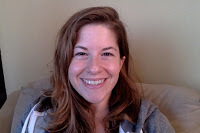
Jessica Nicholls is originally from Northern Illinois. She lived in the Northwest of England for just over ten years, where she studied and had her children. Jessica still lives overseas with her husband and two school age kids. Running, reading and watching films are her favourite hobbies. She loves spirits, passionate love stories, vampires, shape shifters, mythology and almost anything historical. The most important thing for her is for a story to feel real, something to genuinely escape into. Writing the type of stories she would enjoy reading is a passion.
Website | Facebook | Twitter | Amazon
August 17, 2016
Journal of a novel: Aug. 17, 2016. Conflict
In a series of posts, I’ll share both Steinbeck’s Journal of a Novel and what I learn from it, and I’ll show you what the writing life is like for me.
In his March 16, Journal of a Novel entry, John Steinbeck apologizes to his editor that his novel lacks tension.
that is exactly what I want and intend it to do. But it may cause trouble to you as a publisher because people have grown to expect tautness and constant action.
Decades later, little has changed. We writers are instructed to portray conflict in our work. Even Romances have to have conflict. Sure, there’s “boy meets girl” but shortly after that there’s “boy loses girl.” The rest of the story is boy winning girl back. I wonder, would a story that was “boy meets girl” followed by hundreds of pages of boy and girl get along fabulously with no problems and live happily ever after be a bestseller?
My works-in-progress this year are in the Mystery/Suspense/Thriller category. Conflict? No problem. What satisfying about reading (and writing) a story in which a crime is committed and the perpetrator caught is the restoration of order, of balance, after it’s been upset.
Steinbeck goes on to write:
If there isn’t shouting and jumping around it isn’t liked. For people seem to have lost the gift for listening. Maybe they never had it.
and
The admired books now were by no means the admired books of their day. I believe that Moby Dick, so much admired now, did not sell its first small first edition in ten years.
Was Melville simply ahead of his time? Was Steinbeck? I guess while we’re struggling to connect with our audience (which might not happen until after we’re dead), we’d best not give up that day job. (See yesterday’s post on Distraction.)
August 16, 2016
Journal of a novel: Aug. 16, 2016. Distractions
In a series of posts, I’ll share both Steinbeck’s Journal of a Novel and what I learn from it, and I’ll show you what the writing life is like for me.
In his March 14 Journal of a Novel entry, John Steinbeck complains about distractions.
I didn’t get much done yesterday and probably won’t today. Outside things are cutting in.
Tell us about it, John.
At this point in his career, Steinbeck was a full-time writer, although that writing included not only novels abut also film scripts as well as short stories, novellas and nonfiction. He did not, however, have a “day job” which many of us writers do. I’m fortunate in that my occupation is in some respects a “writing job.” However, it’s still a job and one that doesn’t leave a lot of time or energy for working on a novel, or even a short story.
I suspect he also did not have to put into marketing and promoting his writing what I and so many of my fellow authors do. I can tell you, he did not have a blog or a Facebook page or a Twitter account. As much as we might like reaching out to and interacting with the readers of our books, it is work. It calls for different skills and even the writing part exercises different muscles. The industry expects us not only to be talented storytellers but also to master the commercial side, and doesn’t make it easy or give us much help with that, either.
We also want to have a life, and that means spending time with and taking care of friends, family, and community.
I tell you, there are simply not enough hours in the day.
August 15, 2016
Journal of novel: Aug. 15, 2016. Surprise
In a series of posts, I’ll share both Steinbeck’s Journal of a Novel and what I learn from it, and I’ll show you what the writing life is like for me.
I almost didn’t make it today. I spent the morning battling Internet access issues, problems that John Steinbeck never had.

August 12, 2016
Journal of a novel: Aug. 12, 2016. TGIF
In a series of posts, I’ll share both Steinbeck’s Journal of a Novel and what I learn from it, and I’ll show you what the writing life is like for me.
In his Friday, Feb. 23, Journal of of Novel entry, John Steinbeck writes that he’s tiring:
I could go on and do some more work. But I think the energy core is kind of worn down. I think, since I have done so much so far, that I will let it go for the day. I don’t want to get too tired.
Steinbeck worked on his novel every weekday. For the most part, he took Saturday and Sundays off. Most of the time, I do too. Other things that have been clamoring for attention all week, like chores and errands, can’t be put off any longer.
But I also need a break. (I noticed, Steinbeck had no problem starting a sentence with a conjunction, which is frowned upon, but if was OK for him, it guess it’s OK for me.) Writing is wearying. I’m not sure why that is. Perhaps it’s the effort of staying focused and tuning out everything else.
Many years ago I read this observation that was so brilliant, I wish I had not only kept the quote, but also kept who made it so that I could attribute it properly:
When you have been intensely creative, intensely involved in a project and have suddenly come to a standstill and cannot understand for the life or you what has happened, where your creative juice has gone, perhaps you have “The Demeter Dilemma.”
In other words, like the Greek goddess of the harvest, agriculture, and fertility in general, after a long season of producing so much, the artist is simply exhausted. We need winter, to rest, to relax, to rejuvenate, and get ready for the next growing season. Maybe Steinbeck recognized that too.
Speaking of renewal, my copy of Journal of a Novel is on interlibrary loan and I have to bring it back. Never fear, though, my very own copy to keep is on its way. So, I’ll be back on the Steinbeck Trail on Monday.
August 11, 2016
Journal of a novel: Aug, 11, 2016. Word choice
In a series of posts, I’ll share both Steinbeck’s Journal of a Novel and what I learn from it, and I’ll show you what the writing life is like for me.
In his Feb. 20 Journal of a Novel entry, John Steinbeck remarks
I am enjoying this work and I truly want it to be the best I have ever done. There is no reason why it should not have the stature I want. I can hear that in my ears and see it with my eyes and there is no reason why my pencil should not write it.
Well, that’s the thing, isn’t it? I often feel as though I have a clear idea of what I want to write. I can see the scene, hear it, smell it … but can I find the right words so that you, the reader, can see/hear/smell what I do?
Steinbeck cautions himself not to let his writing “ever be adjectivally descriptive. I must hold description to an absolute minimum.” We writers do strive to find the one perfect word to communicate our vision. Perhaps that’s why at first Steinbeck got one page written a day. One single page. In this journal entry he states that he wants to boost his output to two pages.
I wonder, though. My novels began as National Novel Writing Month projects, where I had the goal of writing 1667 words a day. The NaNoWriMo process encourages us to throw every word that comes into our head onto the page. The idea is to adopt a pace that prohibits one’s Inner Editor from judging every word and possibly keeping us from writing anything at all. It’s a great way to avoid double-thinking oneself into writer’s block. Of course, not every one of those words is going to make the final cut. However I found myself wondering if doing a brain dump followed by lots and lots of editing produces writing that’s different from belaboring every word before setting it down.



